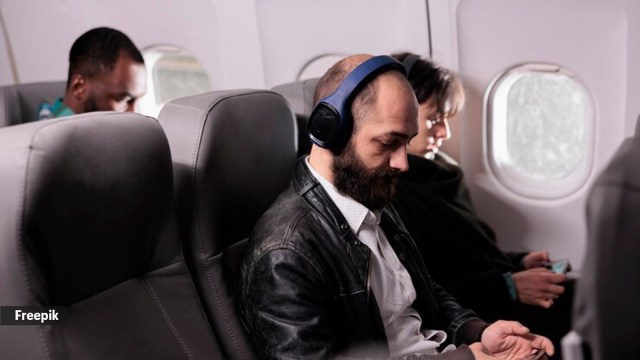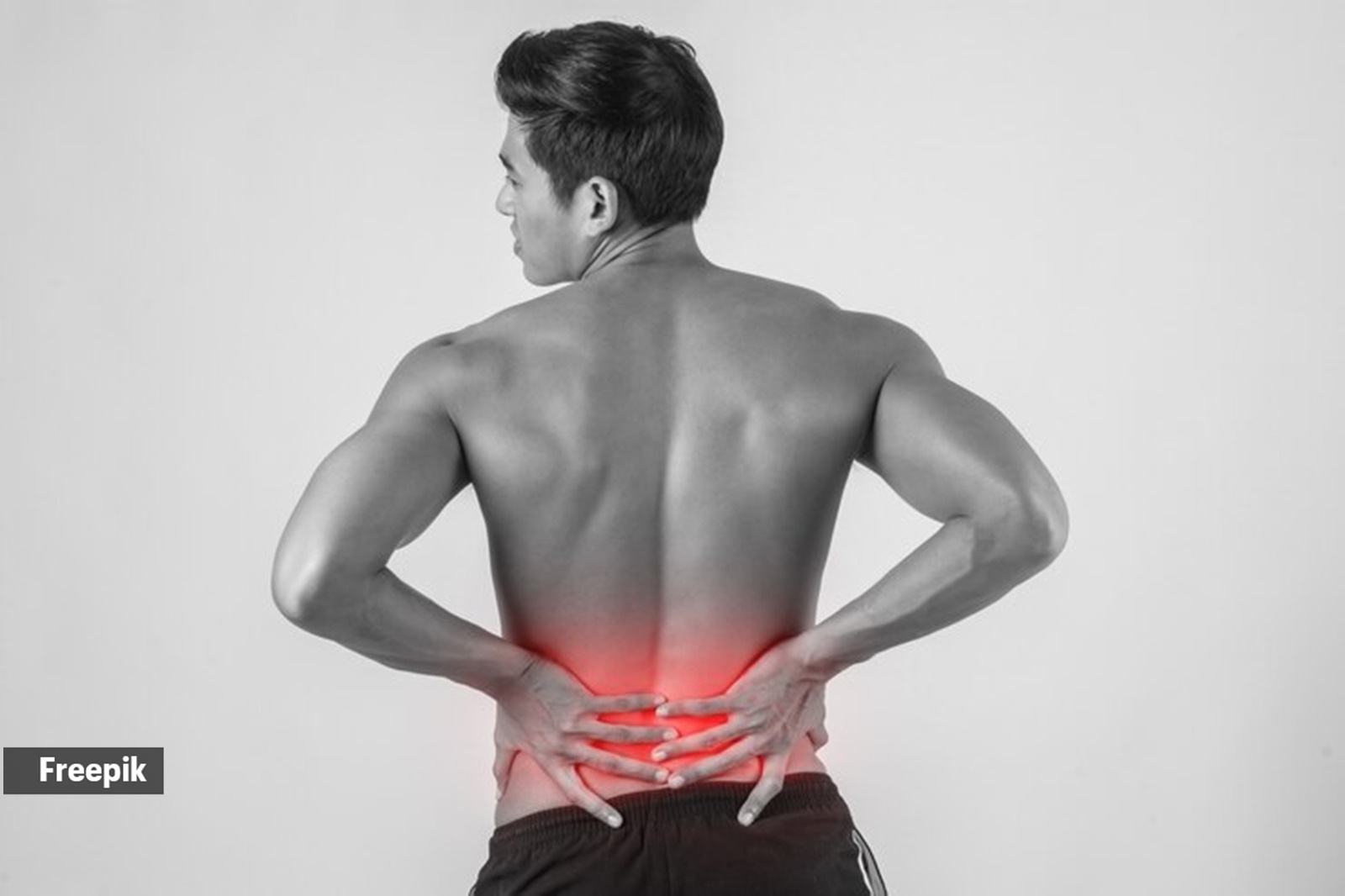- India
- International
Tennis balls for lower back pain on a long-haul flight? Experts give it a thumbs up!
Dr Raghu Nagaraj, director at Institute of Orthopaedics, Sports Medicine and Robotic Joint Replacement at Kauvery Hospitals, Bengaluru, says, “Tennis balls can serve as a tool for myofascial release in the lumbar region by providing targeted pressure that helps break up fascial adhesions and relax tight muscles.”
 Regularly engaging in light stretching or walking during flights activates muscle groups, promotes circulation, and prevents stiffness. (Source: Freepik)
Regularly engaging in light stretching or walking during flights activates muscle groups, promotes circulation, and prevents stiffness. (Source: Freepik)When it comes to long-haul flights, many dread spending hours on those cramped and uncomfortable seats that more often than not, lead to back pain.
However, there are some simple tricks you can try to help alleviate this discomfort while in the air, apparently. According to Dr John Strugar, using a couple of tennis balls can help. In his reel posted on Instagram recently, he mentions, “Take a couple of these and put them in the small of your back, very close to the midline, about three or four finger belts above the beltline, get comfortable and make sure your shoulders are up against the seat (sic),” he says. He suggests pushing the back against the tennis balls and trying to keep them up for the duration of the flight.
View this post on Instagram
To confirm if this technique actually works, we spoke to Dr Raghu Nagaraj, director at Institute of Orthopaedics, Sports Medicine and Robotic Joint Replacement at Kauvery Hospitals, Bengaluru. He concurs, “Tennis balls can serve as a tool for myofascial release in the lumbar region by providing targeted pressure that helps break up fascial adhesions and relax tight muscles. This can increase blood flow and nutrient supply to the affected area, potentially reducing pain and improving mobility.”
Dr Karthik Janarthanan, Head of Therapy, Sukino Healthcare Solutions states, “Tennis balls can be used for self-massage.” He adds, “You can also use tennis balls to target specific pressure points along your spine.”
When asked about its efficacy for those travelling, Dr Nagaraj says that while the use of tennis balls is less standardised compared to other therapeutic interventions like ergonomic supports or pharmacological treatments, it provides a customisable and immediate form of relief. “However, the lack of uniform pressure distribution can make it less effective than professionally designed supports that align with spinal ergonomics and distribute weight evenly,” he continues.
Risks and precautions using tennis balls for back pain
According to Dr Nagaraj, the following risks and precautions need to be considered before using this trick to relieve lower back pain:

Localised pressure risks: Improper placement of tennis balls near sensitive structures, such as the spinal column or sacroiliac joints, can lead to discomfort or exacerbation of pain. It is critical to position them away from the spine and adjust placement regularly.
Precautions and monitoring: Users should monitor for adverse reactions such as increased pain or bruising and adjust the technique accordingly. Those with underlying spinal disorders, such as herniated discs or osteoporosis, should consult a healthcare provider before using this method to ensure it is safe given their specific condition.
 Improper placement of tennis balls near sensitive structures, such as the spinal column or sacroiliac joints, can lead to discomfort or exacerbation of pain. (Source: Freepik)
Improper placement of tennis balls near sensitive structures, such as the spinal column or sacroiliac joints, can lead to discomfort or exacerbation of pain. (Source: Freepik)
Alternative techniques for alleviating back pain when sitting for extended periods
There are several alternative techniques travellers can use to alleviate lower back pain in general. Dr Nagaraj lists them as follows:
*Ergonomic innovations: Using seat cushions made with viscoelastic materials or memory foam can help maintain lumbar lordosis and reduce the load on spinal structures. Lumbar supports specifically designed to fit the contour of the lower back can prevent the development of pain by promoting an optimal sitting posture.
*Clinical approaches: Portable heat wraps or patches are based on the principles of thermotherapy, which involves using heat to dilate blood vessels, thereby increasing blood flow to sore areas to promote healing and relaxation.
*Physiological benefits of movement: Regularly engaging in light stretching or walking during flights activates muscle groups, promotes circulation, and prevents stiffness, aligning with the recommendations for intermittent physical activity during prolonged sitting as outlined in ergonomic health guidelines.
Remaining in a fixed position for an extended period can strain the vertebrae. When muscles lack strength, they struggle to support the body’s weight, leading to discomfort. Engaging in exercises can bolster muscle strength, enabling them to better bear the load and diminish the strain on the spine, thus reducing the likelihood of recurring pain. Spinal extension exercises play a major role in strengthening the entire back.
Dr Janarthanan adds that the following exercises and strategies can help provide instant relief when travelling:
*Compression garments: Wearing compression garments, such as compression socks or leggings, can help improve circulation and reduce swelling in your legs and lower back.
*Breathing and relaxation techniques: Practicing deep breathing and relaxation techniques can help reduce stress and tension in your muscles, promoting greater comfort during the flight.
*Stretching: Regular stretching can help relieve tension in the muscles of your lower back. Some of the stretches can be performed while seated or during breaks in the flight.
*Seated cat-cow stretch: While seated, gently arch your back as you inhale (cow position), then round your spine while exhaling (cat position). Repeat this movement several times to help loosen up your spine and relieve tension in your lower back.
*Seated spinal twist: Sit tall in your seat and cross one leg over the other. Place the opposite hand on the outside of the crossed knee and gently twist your torso in that direction, looking over your shoulder. Hold the twist for a few breaths, then switch sides. This helps to stretch and release tension in the muscles along your spine.
*Seated hip flexor stretch: While seated, cross one ankle over the opposite knee. Gently press down on the crossed knee to open up the hip and stretch the hip flexors. Hold the stretch for a few breaths, then switch sides. Tight hip flexors can contribute to lower back pain, so stretching them can help alleviate discomfort.
*Pelvic tilts: While seated, engage your abdominal muscles and gently tilt your pelvis forward and backward. This movement helps to stabilize the pelvis and strengthen the core muscles, which can provide support for the lower back.
*Ankle circles and toe taps: Regularly moving your ankles and tapping your toes can help improve circulation in your lower body and prevent stiffness and swelling. Perform these movements periodically throughout the flight.
*Hydration and movement: Stay hydrated by drinking plenty of water throughout the flight, and make an effort to move around and stretch whenever possible, even if it’s just standing up and taking a short walk down the aisle.
Buzzing Now
May 03: Latest News
- 01
- 02
- 03
- 04
- 05
























